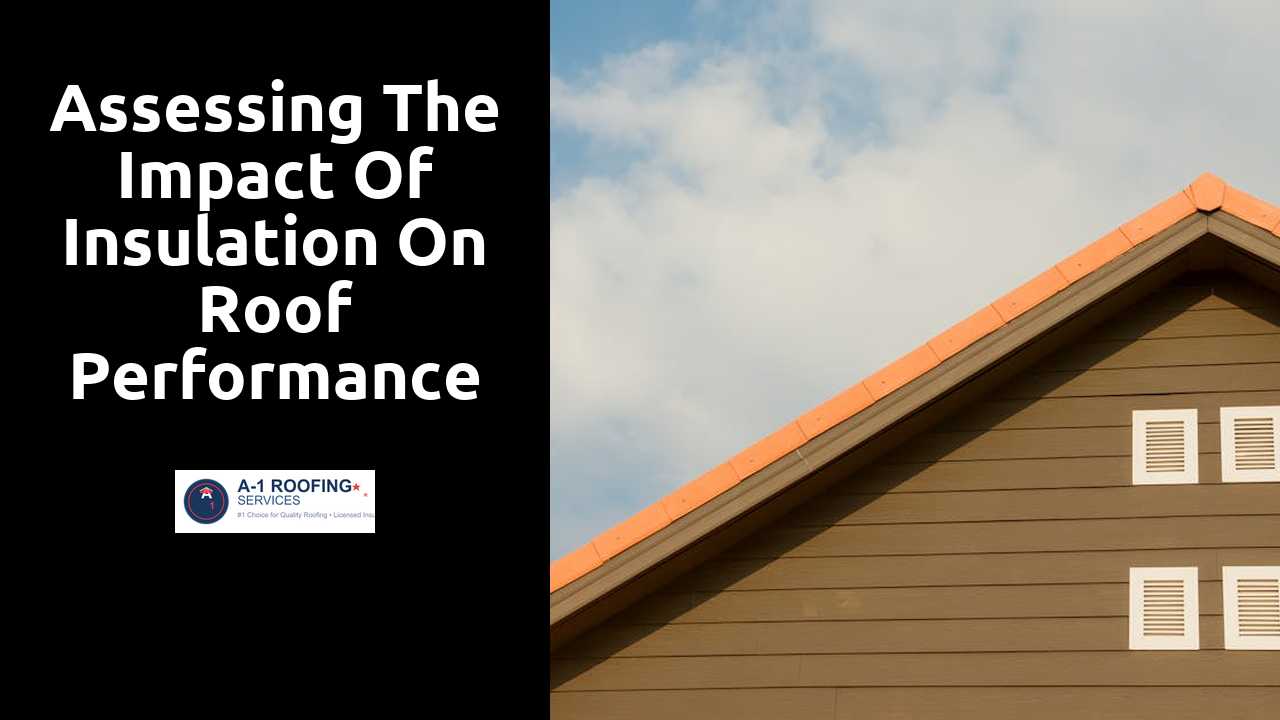
Assessing the Impact of Insulation on Roof Performance
Table Of Contents
Assessing Insulation Thickness and R-value
The effectiveness of insulation in enhancing roof performance can be evaluated by examining its thickness and R-value. R-value measures the resistance of an insulation material to heat flow. A higher R-value indicates better insulating properties, which can significantly influence energy efficiency in buildings. As different regions experience varying climate conditions, the appropriate R-value will vary to meet specific energy demands. Consequently, assessing insulation thickness is essential to achieve optimal R-value goals, ensuring adequate thermal protection and comfort for occupants.
When selecting insulation, one must consider both the material's R-value and the thickness required to meet local building codes. Insulation that is too thin may not provide the necessary thermal barrier, resulting in increased energy costs and reduced indoor comfort. Conversely, excessive insulation thickness can lead to structural issues or may not fit within the building's design parameters. By carefully assessing insulation options, builders and homeowners can make informed decisions that strike a balance between performance, cost, and structural integrity.
Here is a great resource for anyone looking to expand on this topic.
Determining Optimal Insulation Levels
Finding the right insulation level requires careful consideration of various factors, including climate, building materials, and specific use cases. Each geographic region has recommended R-values based on average temperature ranges. In colder climates, higher R-values provide necessary thermal resistance to combat heat loss. Conversely, milder areas may benefit from lower insulation levels while still maintaining energy efficiency. Evaluating local building codes and energy standards can further inform decisions on the appropriate thickness and type of insulation.
The balance between energy efficiency and cost is crucial when determining insulation levels. Investing in higher-quality insulation can lead to significant long-term savings on heating and cooling expenses. However, budget constraints might necessitate adjustments in the type or amount of insulation used. Homeowners and builders should assess both initial installation costs and projected energy savings when deciding on insulation strategies. Prioritizing performance and sustainability ensures that insulation choices not only meet current needs but also contribute to long-term energy efficiency goals.
Insulation and Soundproofing
Insulation plays a crucial role in soundproofing buildings by reducing noise transmission between spaces. The materials used not only help regulate temperature but also absorb sound waves, minimizing echoes and unwanted noises from adjacent areas. This effect is especially important in multi-family dwellings, commercial spaces, and homes located in noisy environments. Choosing the proper insulation material and thickness can significantly enhance acoustic comfort while maintaining energy efficiency.
Effective soundproofing involves more than just adding insulation to walls or ceilings. The installation techniques and the choice of components, such as resilient channels and sound-absorbing barriers, can further improve a building's ability to mitigate sound. By strategically placing insulation in key areas, homeowners and builders can create pleasant environments that minimize disturbances, leading to increased privacy and overall quality of life.
Enhancing Noise Reduction in Buildings
Effective insulation enhances a building's ability to minimize noise transmission between spaces. Various insulation materials, including fiberglass, cellulose, and rock wool, play a crucial role in sound absorption. These materials can significantly dampen sound waves, leading to quieter interior environments. Strategic placement of insulation within walls, ceilings, and floors further promotes soundproofing, making it possible to isolate noise generated from external sources as well as internal activities.
Incorporating high-density insulation can provide additional soundproofing benefits. The thickness and composition of the insulation layer directly influence its capacity to block sound. Enhanced insulation not only contributes to comfort but also encourages better productivity in residential and commercial settings. With well-insulated buildings, occupants are likely to experience fewer disturbances, promoting a peaceful atmosphere conducive to both work and relaxation.
The Environmental Benefits of Insulation
Insulation plays a significant role in enhancing energy efficiency in buildings, which directly contributes to reducing carbon emissions. When properly installed, insulation minimizes heat loss during colder months and keeps indoor spaces cool during hot weather. This efficient regulation of temperature reduces the reliance on heating and cooling systems, resulting in lower energy consumption. As buildings use less energy, they also contribute to a decrease in the overall demand for fossil fuels, leading to a smaller carbon footprint over time.
The environmental benefits of insulation extend beyond energy efficiency. Insulating materials often have a longer lifespan than many other building components, which reduces the frequency of replacements and the consequent waste generated. Additionally, many modern insulation products are made from sustainable materials or are recyclable, further lessening their impact on landfills. By incorporating effective insulation, homeowners not only improve comfort but also embrace a more sustainable approach to building management that aligns with environmental conservation goals.
Reducing Carbon Footprint and Resource Use
Effective insulation plays a significant role in minimizing energy consumption, which directly correlates with a reduction in greenhouse gas emissions. By maintaining comfortable indoor temperatures, buildings require less energy for heating and cooling. This not only lowers utility costs for occupants but also decreases reliance on fossil fuels and other energy resources. As insulation technology advances, materials with higher R-values can be utilized, allowing for thinner installations without compromising thermal performance.
In addition to energy efficiency, the production and use of insulation materials can also impact resource consumption. Choosing sustainable and eco-friendly insulation options contributes to lower environmental footprints. Materials such as recycled denim, cellulose, or sheep's wool are gaining popularity due to their natural origins and biodegradability. The adoption of these greener alternatives not only promotes sustainability but also encourages a circular economy in the construction industry.
Related Links
The Role of Roof Overhangs in Energy EfficiencyEco-Friendly Roofing Options for Sustainable Living